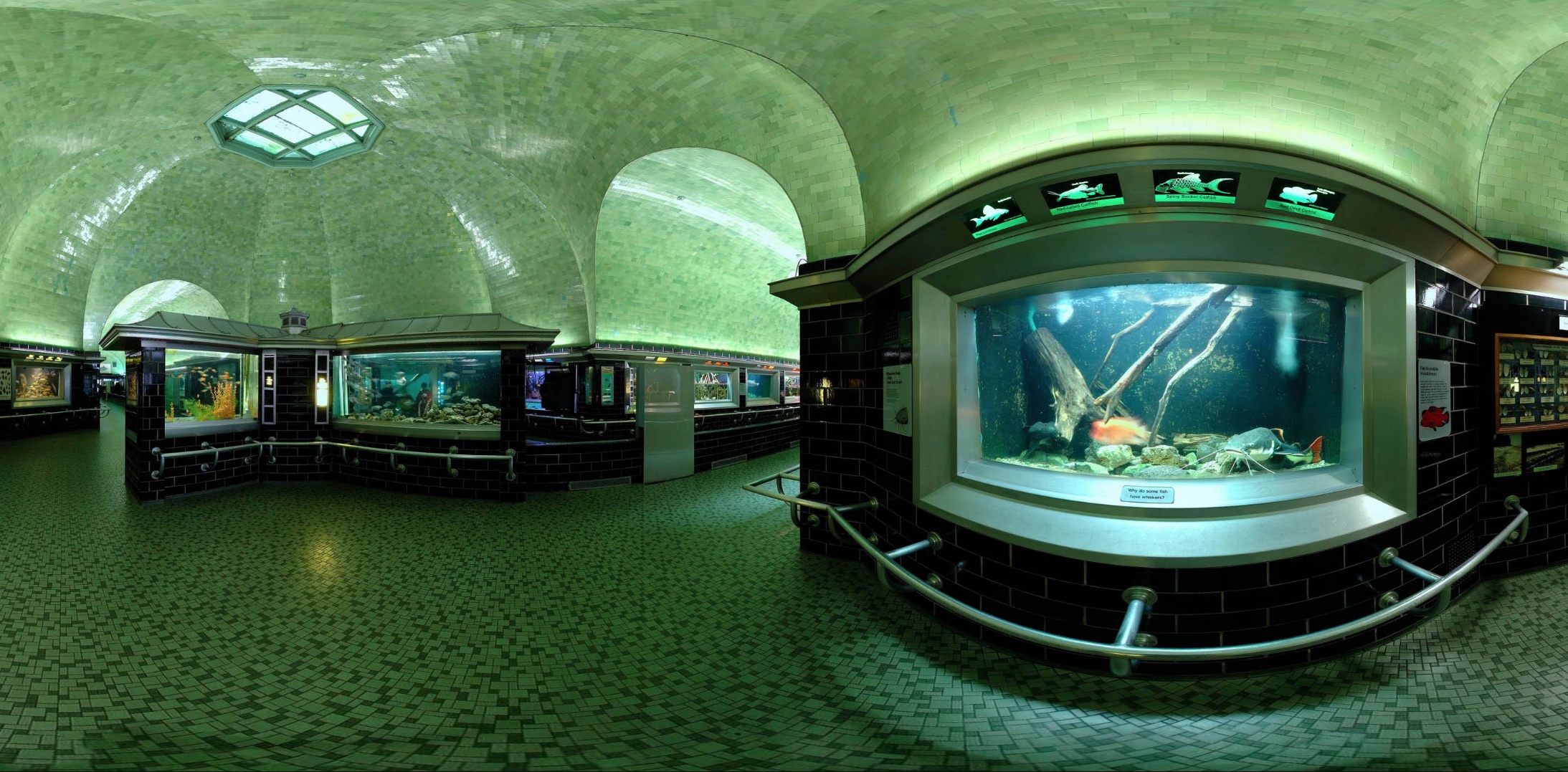Giant Slide, Aquarium, and Nature Center: Belle Isle Highlights and Improvements

During the COVID-19 pandemic, visitors to Detroit’s Belle Isle State Park hit an all-time high of 5 million. Thanks to the Michigan Department of Natural Resources’ 30-year lease on the island, Belle Isle has undergone several repairs and renovations in the past few years and many more improvements are in the works.
One of the most noteworthy recent events on Belle Isle was the reopening of the iconic Giant Slide, which sparked a worldwide viral phenomenon. The Giant Slide, along with the majority of Belle Isle, is currently managed by the Michigan Department of Natural Resources (DNR). The ride was built in 1956 and operated for several decades before being closed in the early 1980s while the then-aging slide was replaced. Following the replacement, the slide ran for many years up until 2020, when operations were shut down for two years due to COVID-19 restrictions. Before the pandemic closures, the Giant Slide was averaging 30,000 riders a year.
Several videos of people riding down the Giant Slide when the attraction reopened in August went viral on social media, garnering millions of views and drawing attention to Belle Isle from around the globe. “For a guy like me, it was a surprise with all the social media, because we had already been running the slide for many years,” says Michigan DNR Belle Isle park and recreation manager Karis Floyd. “I ended up doing a television show in Japan because they’d never seen anything like it before. I’ve gotten people calling me and saying they want to open a Giant Slide in their city,” says Floyd. “It’s touched base with a lot of people. I had like 56 reporters that wanted to go down the slide,” Floyd continued, “Even the Attorney General for our state came out here and went down the slide.” The Giant Slide is now closed for the winter, but riders can expect to see the slide reopen around Memorial Day 2023.
Besides the reopening of the Giant Slide, Belle Isle has undergone many other improvements since the DNR took over the park in 2014. Floyd says that the DNR “has basically gone through and assessed each facility on the island. A lot of the facilities have, now, restored roofs, plumbing, electrical, and asbestos removal.” The DNR has also restored well-known park structures such as the Belle Isle Casino, the Flynn Pavilion, and the James Scott Memorial Fountain. The Anna Scripps Whitcomb Conservatory is also set to receive a full glass replacement in the coming months.
Floyd, who has worked with the Michigan DNR for 37 years, says that the opportunity to take over as park manager of Belle Isle was a “no-brainer” for him thanks to his personal connection to the island, growing up just a few miles away. Floyd says that one of his favorite spots on the island is Sunset Point, “because you stand on Sunset Point, and you can see the entire city of Detroit. Then if you look left you’re looking at the city of Windsor.”
The Michigan DNR is looking forward to working with the Detroit community to decide the direction of the remaining 22 years of their lease on Belle Isle. “We’ve got about 17 meetings that are set up where we will meet with the community,” says Floyd. “All the stakeholders and city council will be meeting with a whole lot of people to get their opinion on how they would like to see Belle Isle look 20 years from now.”
One of the most talked-about possibilities for Belle Isle is the utilization of the space that was once occupied by the Belle Isle Zoo. The zoo, also known as the Detroit Children’s Zoo or Safariland, was open from 1895 to 2002. While there are currently no plans to reopen the area as a zoo, the DNR is working to create a vision for the area by surveying the opinions of Detroit residents and working with design students from Michigan State University and the University of Michigan. Another organization dedicated to restoring Belle Isle is the Belle Isle Conservancy. The Belle Isle Conservancy is a nonprofit park-benefit organization that is the result of a 2012 merger between the Friends of Belle Isle, Belle Isle Botanical Society, Belle Isle Women’s Committee, and the Friends of Belle Isle Aquarium. “Since then, our capacity to serve has evolved to include a professional staff with specialized skills, including aquatic animal care, conservation and environmental sustainability, education, engagement, communications, and more,” says Belle Isle Conservancy Community Engagement Associate Ayo Thomas.
The Belle Isle Aquarium, one of the oldest public aquariums in the United States, has been managed by the Belle Isle Conservancy since the organization officially came online in 2012. The Conservancy has “restored infrastructure, including tank restorations, tank scaping, the National Daughters of the American Revolution: Louisa St. Clair Chapter lobby and exterior foyer renovations, quarantine and lab space, and the outdoor education dock,” since they took over the Aquarium, says Thomas. “We’ve also returned the tanks to nearly 100 percent occupancy, many to support conservation efforts and care for endangered or nearly extinct species, expanded visitor experience and programming, and environmental sustainability efforts, and continue to move towards AZA [Association of Zoos and Aquariums] Accreditation and leadership in conservation and community connectivity through partnerships and coalitions, including Detroit River Coalition, and as a cultural institution and central hub for water conservation, aquatic education, and plastic-free waters.”
While Belle Isle as a whole thrived during COVID lockdowns thanks to the emphasis on outdoor activity, the indoor Aquarium was not immune to its negative effects. “Being closed meant a loss in contributed revenue through donations,” says Thomas. “Even when the doors reopened, we recognized that visitors were, and still are, feeling the strain and may not have as much to contribute. Nevertheless, we are proud to maintain the BIA as a free facility and continue seeking new opportunities to offset operating expenses.” However, Thomas explains that the Conservancy is still looking forward to future improvements, saying “As we look to the future, we continue to focus on the strategic plan and fundraising to ensure our sustainability.”
The most recent improvement to the island was the renovation of the Belle Isle Nature Center, managed by the Detroit Zoological Society. “We did close in March 2020 when the rest of the world shut down, and we re-evaluated the animals. Last June we returned to programming,” says Amy Greene, Director of Nature Centers for the Detroit Zoological Society. “We turned to outdoor programming which is easy when you’re a nature center,” Greene explains, “We had been planning and developing, pre-pandemic, our ideas on how we wanted to address the needs of the space for the animals, for the staff, and for the guests. Once we realized that we were going to remain closed,” Greene says, “That’s when we said, ‘Ok, let’s do this now.’” Greene adds, “For the past year the contractors, the fabricators, and the designers, were on site for almost a year putting it all together behind the scenes while we were outside.”
Greene says, “The most dramatic changes were in terms of animal welfare and care and interactive things for people to do.” Greene continues, “There always has been great animal care and welfare, but now all the habitats are immersive. Florida ceiling, zookeeper access, and bigger, which makes it better for everybody.” Some of the interactive spaces in the Nature Center include the Learner Space where young visitors can crawl through tunnels like ants and worms, the Tree Frog Habitat where young visitors can pop their heads up and see the frogs, and the Mud Puppy Habitat. Greene identifies mud puppies, a North American species of salamander, as the Nature Center’s “mascot animal.” Greene elaborates, “They’re indicator species, and their health indicates to us the health of the Detroit River. That’s a profound thing that we highlight here to help people connect to their space.”
Greene shares that her passion for community engagement and sustainability started during her 13-year career as a science teacher. “We would do square-foot gardening with the kids and recycling; all of the stuff that the test-based curriculum wouldn’t allow for. Then we would do it on Saturdays and after school, and I realized that’s where the magic is and there’s probably a place out there to do that,” Greene says. “Then I found the job at the Nature Center. About seven years ago, I started as a curator of education, then after a few years became the Director of Nature Centers.”
Another exhibit in the Belle Isle Nature Center is a replica of a sewer tunnel, which Greene acknowledges is “not what people typically think of when they go to a nature center.” However, Greene explains the significance of the sewer tunnel replica. “As humans, we need infrastructure, and we can think about what we’re doing and where things end up.” Greene adds, “We’re showing how your litter moves through systems and can impact wildlife.” While exhibits like the sewer tunnel may be out of the ordinary for a nature center, Greene states that “Typically when people think of nature centers, it’s kind of cozy and ski lodge-like and out somewhere. Our intention here, both with the physical place and with the programming we do, is to flip that and say, ‘Nature isn’t out there, it’s wherever you are.’”
Belle Isle Nature Center. Photo courtesy Belle Isle Nature Center.

